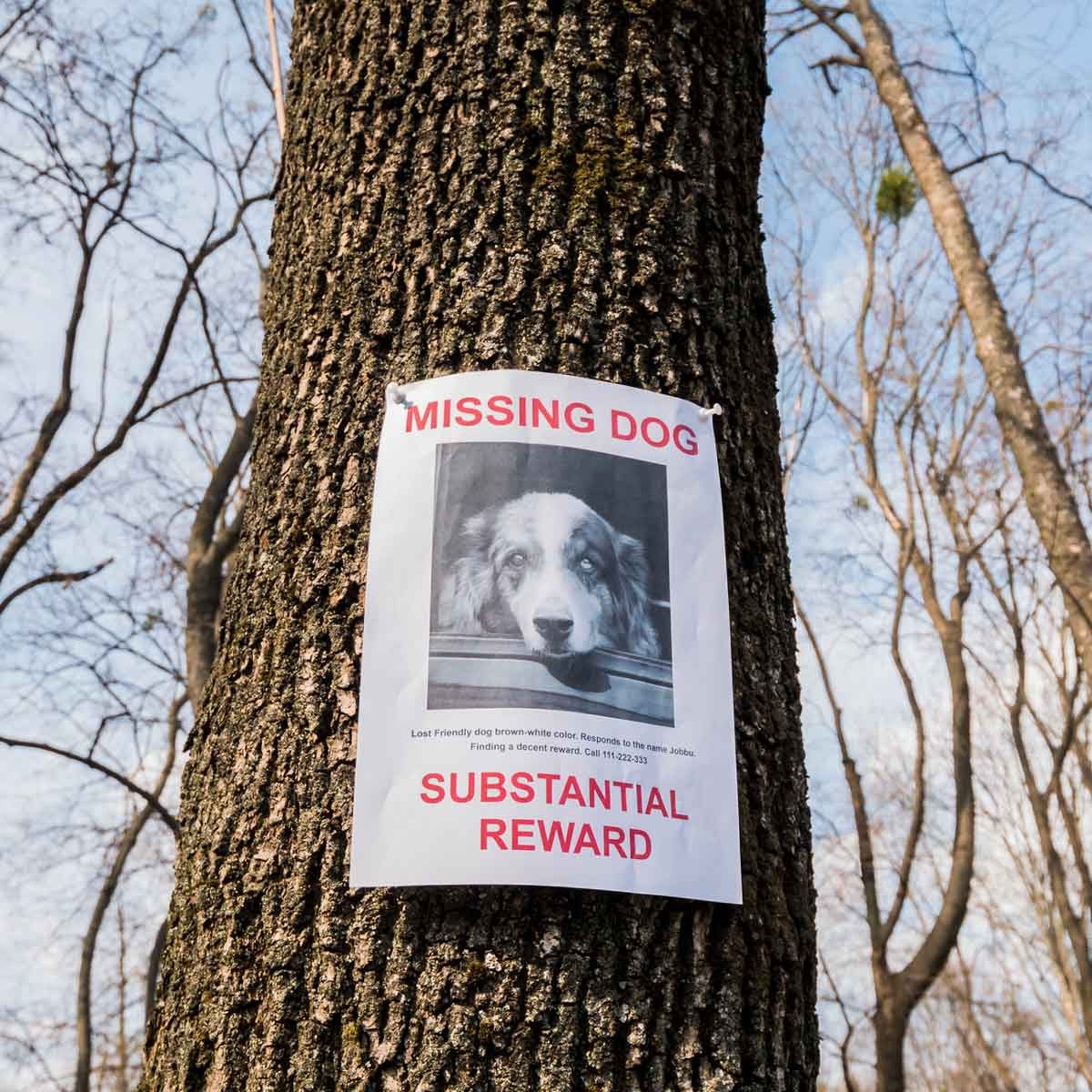It's traumatic having your dog run away or get lost. Here's what to do when you realize your dog has gone missing.

What to Do If Your Dog Runs Away or Gets Lost

It’s one of the worst nightmares of dog owners everywhere: having your dog run away or get lost. Dogs can slip out the front door, dig themselves under a dog fence or break through a dog leash. No matter how your dog gets loose, there are steps to take to increase the chances they’ll make it back home.
On This Page
The First Thing You Should Do
Start searching for them immediately. Do not waste any time. Start in the surrounding area, as lost dogs will tend to stick to areas they know. If they’ve only been gone for minutes, chances are they’re still close by.
Open yard gates and put food out to entice them back. Use positive recall words to lure them, like “peanut butter.” Or if your dog loves car rides, start your car and gun the engine a little.
Alert the Rescue Organizations in Your Area, Including the Police
If an hour goes by with no luck, get on the phone and alert every shelter and kennel within a 60-mile radius of your home. Call your local animal control and police department as well. The police can alert the patrolling officers to keep their eyes out. Make sure to provide these agencies with an accurate description and a recent photograph of your lost dog.
Enter the Microchip Number Into the Registry
If your dog has a microchip, immediately register its unique number into the pet chip registry and make sure all your contact information is updated. When a lost dog is found and taken to an animal shelter or veterinary clinic, one of the first things they do is scan the animal for a microchip. If the microchip registry has accurate information, they can quickly contact a recovery service like AKC Reunite to help contact the animal’s owner. As a bonus, there are a bunch of smart pet doors that work with microchips.
Create a Small Search Party
Time is of the essence when your dog is missing. Recruit neighbors, family and friends to help search for your dog on foot or by car. Arm your search team with dog treats and a photo of your dog and advise them not to chase them, as that can encourage your dog to run. There are also organizations like Dogs Finding Dogs who use canine search teams to help find missing pets by the power of scent.
Post On Social Media and Neighborhood Networking Services
The power of social media will help spread your message fast. Besides posting to your personal pages, encourage friends to share your posts. Also, post to any community or town Facebook pages.
Nextdoor is a great neighborhood platform to spread the word about lost pets. It also features a pet directory that area residents can scroll through if they find a lost dog.
Flyers Are Still Effective in Getting the Word Out About a Lost Pet
A lost dog flyer should include a large picture of your missing dog so it catches people’s attention. Use a large, bold, easy-to-read font and include your dog’s name, your name and your phone number.
Some municipalities have rules about where you can post personal flyers so make sure you’re putting them where they won’t get taken down. Public bulletin boards are usually safe. Ask local businesses if they are willing to let you put a flyer in their window.
Check Local Shelters
Shelters can be overwhelmed and it may take them some time to contact you if your pet has been dropped off there. Be proactive in checking the shelters yourself every day or every other day. Ask to see their recent intakes and remind them of your situation.
Don’t Give Up
Dogs have been reunited with their owner months after running away or getting lost. The ASPCA reports that 49 percent of dog owners found their dog just by searching the neighborhood.
Ways to Increase the Chances of a Safe Return
ID Tags: Make sure the tag on your dog’s collar includes their name, your phone number and city. Choose a tag that is durable and won’t rust, like the Providence Engraving Pet ID Tags.
Custom collars: With the Custom Catch Personalized Dog Collar, you can have your dog’s name, your phone number or any other text you choose engraved right on the collar. Prices vary by color and size.
Microchips: A microchip is a tiny identification device implanted beneath the skin of your dog. Many veterinarians and some animal shelters implant microchips for a small fee. Once chipped, make sure to register your dog’s unique ID number with the microchip registry.
Smart collars: Smart dog collars can help keep track of your furry friend if they get lost. Invest in one equipped with GPS tracking, like the Whistle GO. It costs $100 with a $10/month subscription. It offers real-time GPS tracking and escape alerts sent to your phone.




















